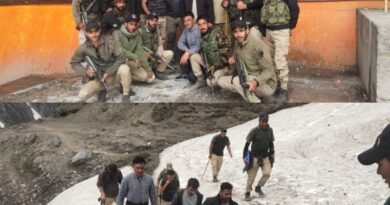Kashmir Leads the Global Internet Shutdown Score But is it Really Helping the Valley?
Srinagar: Internet shutdowns in Kashmir, perhaps, remain the missing pages in the narrative of a Digital India. A country attempting a digital revolution, while also globally leading the internet shutdown track record, undisputedly, reflects the irony in the world’s largest democracy.
According to a study at the Stanford University (Of Blackouts and Bandhs: The Strategy and Structure of Disconnected Protest in India), India has witnessed 134 network shutdowns in 2018 alone and more than 100 in 2016-17. Most of these blackouts happened in the volatile Kashmir region.
The aim of the internet shutdowns is to control the spread of rumours, misinformation and restore law and order. However, the study suggests that the shutdowns do not seem to be meeting their intention.
The study found that approximately half of the world’s known network shutdowns have happened in India alone, mostly in Kashmir. “A cursory look at the trajectory of shutdowns in India shows that the northern border states have acted as ‘innovators’ and shutdown contagion has advanced south with time,” read the research.
It also points out that these shutdowns are neither executed on the national level nor concentrated in a single state. Internet shutdowns are as decentralised as state power, it then comes to appear. The study also found a correlation between the co-occurrence of violence with a shutdown and non-violent action. An internet shutdown seems to encourage violent action.
“Information blackouts compel participants in collective action in India to substitute non-violent tactics for violent ones that are less reliant on effective communication and coordination,” it reads.
These shutdowns are measures of deliberate action by the authorities and are imposed by the state governments who find it “useful in pacifying or preventing protest”, the study says, supporting its arguments with strong empirical evidence.
The 2016 unrest in Kashmir gave the state its longest internet shutdown, which lasted for 203 days. In India, the number and diversity of both protests and network shutdowns affect life and livelihood deeply.
The study, hence, maintains that “widespread institutional support makes India the most shutdown-prone sovereign state in the world by several orders of magnitude”.
State governments and judicial entities ordered approximately 100 blackouts and disrupted several communication networks, which stands more than all other countries combined, the study says.
As per different estimates used in the study, the total duration of shutdowns in India between 2012 and 2017 remains 16, 315 hours (680 days), which has generated an economic loss of approximately $3.04 billion.
“Despite the prolific use of network shutdowns across the country,” the study points, “neither India nor any other national government has conducted publicly acknowledged studies on the effectiveness of shutdowns as a means of suppressing unrest”.
Nearly 23 deadly violent incidents, the study has found, and at least as many that did not prove fatal were linked to WhatsApp between mid-2017 and November 2018.
The majority of blackouts in the country occur in the states of Gujarat, Rajasthan, Haryana, and Jammu and Kashmir (J&K), with the state alone comprising about 47% of the total shutdowns.
“Of 36 states and union territories, these four regions account for more than 75% of all recorded shutdown events in India (2012-17), while Jammu and Kashmir alone comprises about 47%,” it reads.
The authors of the study have found that a large proportion of these shutdowns are implemented with the explicit goals of ensuring or restoring public order, as against the known practice maintaining security “during peaceful mass events such as festivals and processions”. However, it finds that “in most instances, this has been tantamount to preventing or quashing protests, riots, or collective violence”.
In India, the institutional variables, the study reads, play a significant role in the expansion of network shutdowns as a form of information control. “Before August 2017, shutdowns were executed primarily under Section 144 of the Code of Criminal Procedure — a legal provision with roots in the British Raj which grants states broad powers to prevent or disperse unlawful assemblies during curfews,” it reads.
The internet blackouts are perceived as a logical extension of curfews and measures whose purpose is to inhibit public gatherings. The study concludes to position India “as an extreme case in several respects”.
“India’s contribution to their total count has never been smaller than 23 percent, with a clear increasing trend,” the study has found. Globally, India is “one of the few democracies to have exercised the power to shut down communication networks”.
With the increasing number of internet blackouts, the study has found that the “public dissent in India has also been on a steady upward trajectory, with every previous year surpassing the number of events in the previous”.
“In many ways, India is a Petri dish of information control in the developing world,” the study says in its concluding remarks. (News18)




